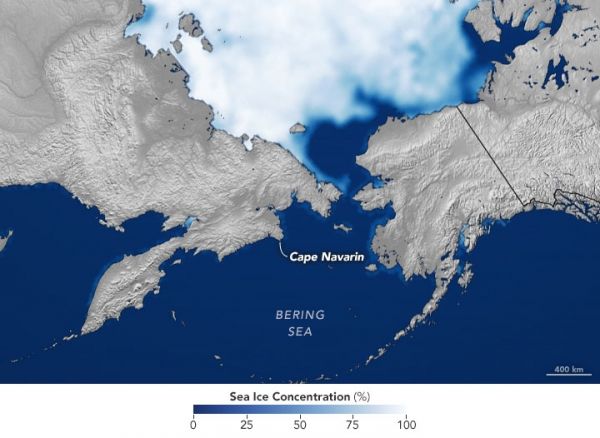As autumn inches toward winter, seasonal changes emerge across the Northern Hemisphere. In mid-September 2021, vegetation on northeast Siberia’s Cape Navarin had already turned from green to brown, and snow covered some of the higher elevations. By late October, the entire cape was blanketed in white. Cooler temperatures and shorter sunlit days were also transforming the ocean, as wisps of sea ice started to appear just offshore.
Swirls of ice were visible off Cape Navarin on November 2, 2021, when the Operational Land Imager (OLI) on Landsat 8 acquired these natural-color images. The wide view shows the snow-covered cape, which forms the southern boundary of the Gulf of Anadyr—a large bay of the western Bering Sea. The detailed view shows patterns in the sea ice as it traces the coastal current.
According to Kay Ohshima, a scientist at Hokkaido University, the sea ice is showing up right on time. In the western Bering Sea, ice tends to first form along shallow coastal shelf areas of the Gulf of Anadyr, usually by mid-October. But growth of sea ice here is quite variable; it can continue growing until February (in warm years) or as late as the end of April (in cold years). Either way, sea ice in the western Bering is usually completely gone by mid-June.
Read more at: NASA Earth Observatory
Photo Credit: NASA Earth Observatory


